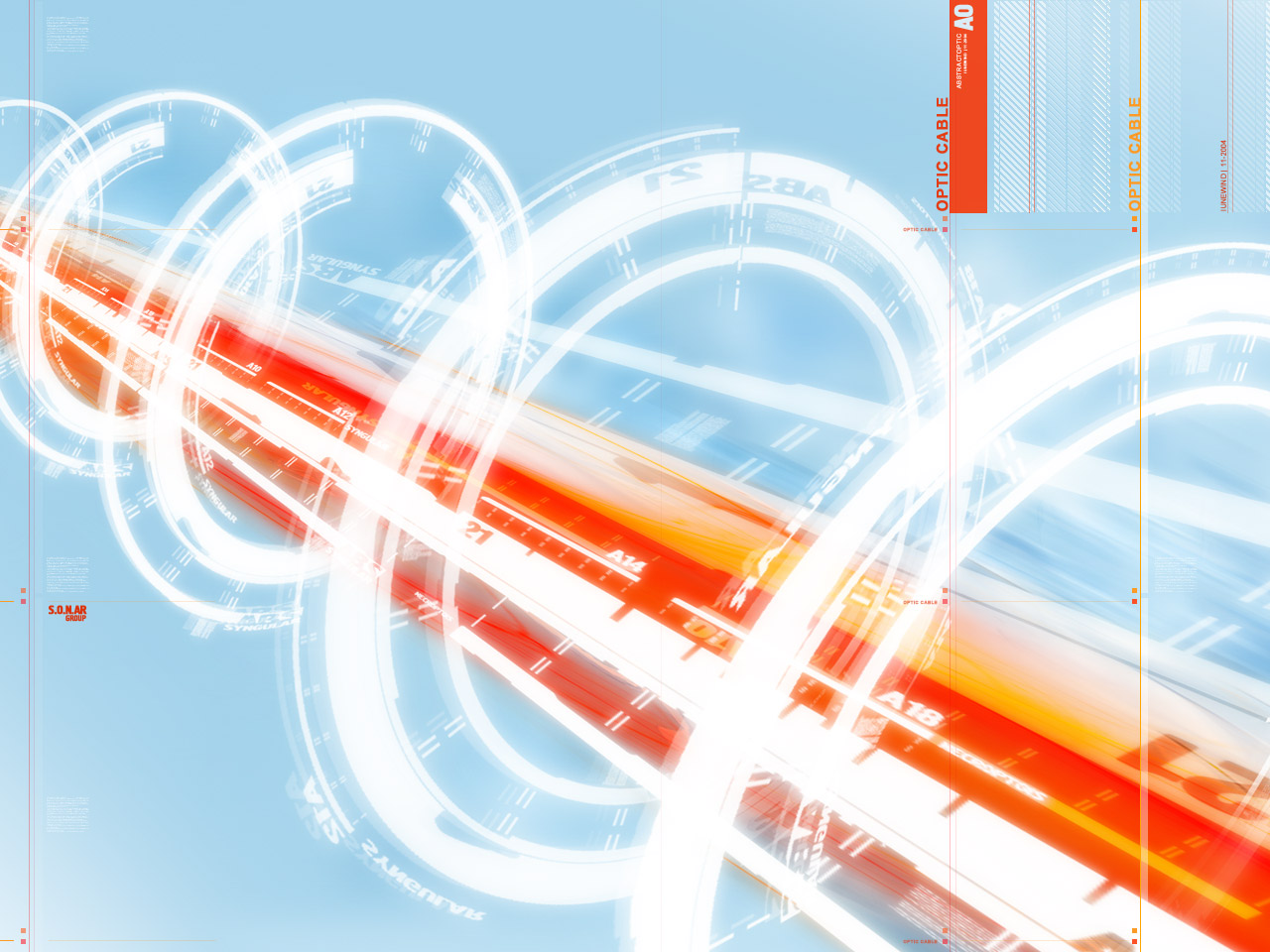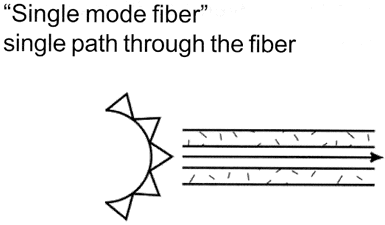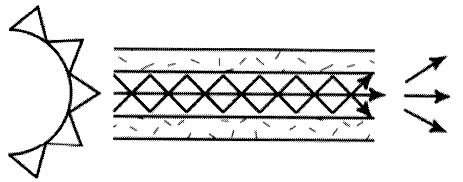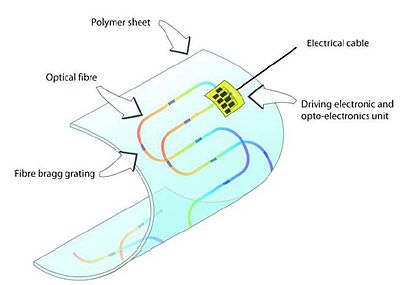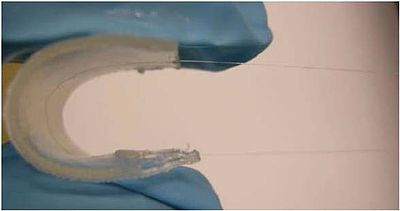fiber optic bend sensors
by Sara
Timothée Boitouzet and Sara Hendren
Fiber optic bend sensors blend the powerful transmission properties of optical fibers with multiple sensing capabilities. Through detectable changes in the longitudinal bend of the fiber shaft, these sensors can track changes in strain, pressure, and more—and can sense multiple properties at once in their multi-modal form. Their small size and ability to work without electronic power at the remote location make them useful in many applications.
The optical fibers themselves may be sensors (“intrinsic” sensors), or the sensor may be used to connect other (non-fiber-optic) sensors to other systems (“extrinsic” sensors). A particularly distinct advantage of the fiber optic form is its capacity to provide distributed sensing over distance, up to one meter.
I. Fiber Optics
Fiber optic cables transmit signals by light pulses moving along hair-thin shafts of glass, or plastic:
Fiber optic cables are used for all kinds of signal transmissions in daily life—internet, telephone lines, and so on—because of its superior speed and power, its clean signal, and lower cost than that of copper wire electrical systems. Cables may be single or multi-modal form:
II. Optical fibers as bend sensors:
Fiber optic sensors measure four different modulations to their optical signals: intensity, polarization, phase, and frequency. Intensity monitoring is the easiest to set up and measure by bend sensors; the sensors register changes in modulation and intensity by a critical bend angle (via Snell’s Law) that causes light to be refracted away from the core rather than reflected back into it. As a result, bend sensors can measure a number of changes registered by the bend such as curvature or soil deformation.
Sensors are especially powerful in their multi-modal form enhanced by Fiber Bragg Grating (FBG)—a technique that “grates” on the core cladding material to multiply the rate and intensity of this light refraction. Additional paper on this topic: Implementation of vectorial bend sensors using long-period gratings UV-inscribed in special-shape fibers. However, this technology is costly (the glass and the grating process). Our assigned paper (see the Assignments page) examines a new plastic fiber-optics bend sensor that measures intensity reliably and at lower cost; this innovation seems to promise more widespread use of fiber-optic bend sensors in construction and engineering projects.
III. Where to acquire:
Allied LLC has a number of sensors available for retail customers.
II. Applications:
Relevant to our course, PHOSFOS uses optical bend sensors in projects integrated into flexible or stretchable skins:
These skins easily measure pressure, strain, and deformation; they have advantages over other e-skins because of their portability and distributed sensing over greater distances. Wearable sensors could be upgraded in power and distance with fiber optic technologies.
Medical engineering, aerospace and maritime technologies, automotive and industrial uses. The first video below shows a shape-sensing needle for medical engineering projects; the second video demonstrates the use of FBG for powerful sensing capacities, discussed above:
